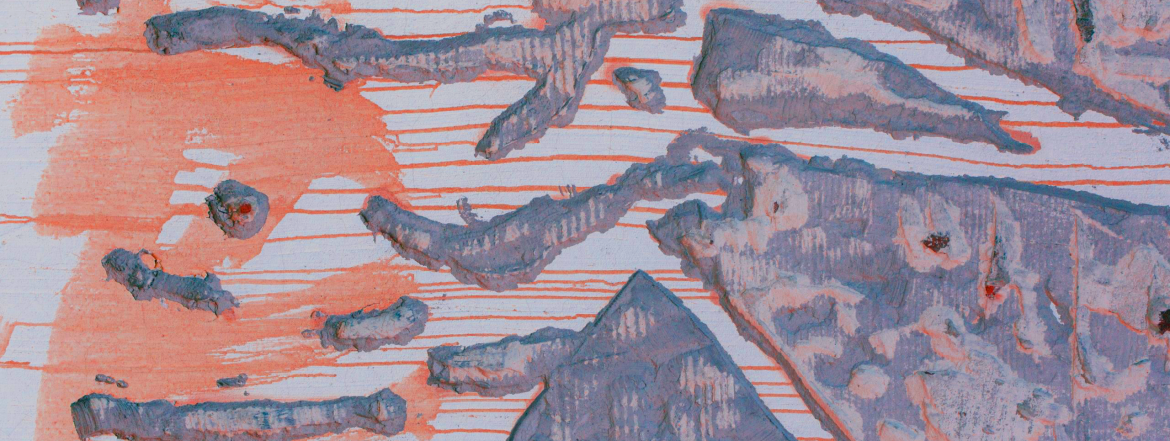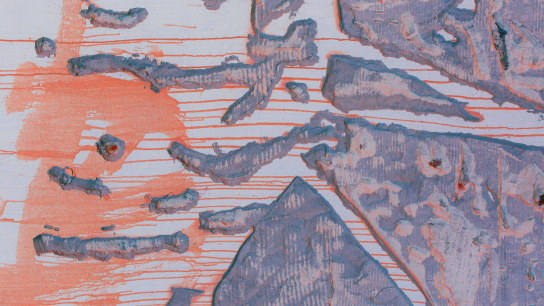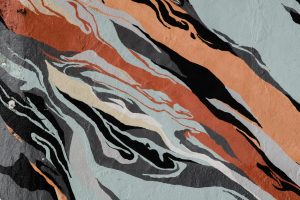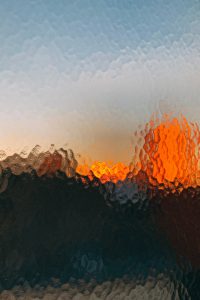Reimagining California’s Relationship to Fire
by
California’s recent blazing superfires and smoke-chocked skies have ignited the apocalyptic imaginary of those living in, and beyond, the region.1 Spectacularized images of California in flames have come to stand in as a kind of visual metonym for the destruction promised by accelerating climate change. Since the 1980s, more than one seventh of California has burned. Eighteen of the top twenty of California’s most destructive fires have occurred in the recent decades after 2000 (the remaining two in the 1990s). Recently, the region’s increasing and increasingly destructive fires have caused Forest Service and CalFire employees to shift to the “concept of a fire year,” nostalgic for a time when fires did not rage year-round and California had a “fire season.”
Like climate change, California’s increasing fires must be contextualized within a history of racial and colonial violence. These violences order environments, controlling relations with lands, waters, and more-than-human life. California’s current relationship to fire is fueled by colonial worldbuilding2 and extractive racial capitalism,3 as well as the ongoing Western nature/culture binary that invisiblizes the structural racism and colonial matrix of power fueling the 21st century’s spectacular environmental violence. California’s combustible landscape, exacerbated by human-caused drought and heat — and infrastructure systems, including its many miles of high tension powerlines and century-old transmission towers — come together in a perfect firestorm of colonial making. The history of the region that is now known as California4 includes triplicate and ongoing colonial regimes — first by the Spanish, then by Mexico, and, into the present, by the US. The current conceptualization of fire as only ever dangerous and destructive started with the Spanish, who viewed Native Californian peoples’ application of fire as careless. In the early 1900s the US Forest Service Adopted a policy of fire suppression because it wanted to maximize the number of trees per acre, and thus any fire was viewed as threatening to valuable timber. This policy stayed in place until the 1970s. Before the genocide of the Gold Rush, it is estimated that 4.5 million acres were carefully burned annually throughout Indigenous California. While fire has been slowly reintroduced to the landscape, only a small fraction of lands are burned that once were. Beginning with Spanish conquest, and continuing into the present with CalFire and US Forest Service policies, fire suppression and the limiting and banning of prescribed/controlled burning became standard land management practices. Fire suppression, born out of a commodification of the land as resource and desire to maximize profit, in part, makes regional colonial worldbuilding, and its control of the land, possible.
I conceive of California’s current colonial cultural imaginary of fire as prophetic. Burn suppression results in a buildup of dead trees, dry tinder, and flammable chaparral, and contributes to larger, more destructive, and out of control fires. Abran Lopez, a member of the Amah Mutsun Native Stewardship Corps., explains:
Fire is going to be on the land whether we like it or not. We could either choose when and where and how we prepare for it and how to deal with it. Or, continue on with fire suppression and hope that it do[es]n’t come back. But it eventually will. And the problem is that it becomes these high intensity superfires that cause nothing but damage. There is no benefit to it.
Superfires, as Lopez explains, do not regenerate the land, and instead sterilize the soil and kill seeds in its seedbank. Fearing fire renders a totalizing view of it as something to be suppressed. Imagining fire to only ever be a force of threatening destruction creates a self-fulfilling prophecy, as it directly contributes to the region’s increasing and increasingly destructive fires. Suppressing fire is one of the ways that colonialism in California fuels and sustains itself — subsuming the future of fire on these lands, and the Indigenous lifeways it supports, under its destructive prophetic self-fulfillment and the control it engenders.
What might it mean to reimagine the region’s relationship to fire? Can refusing to reduce fire to a purely destructive force, honoring fire’s power for regenerative renewal, combat the region’s colonial worldbuilding? What might it mean to learn from, what Amrah Salomón J. describes as, the “wisdom in fire“? Does reconceptualizing fire make other formations of environment, power, identity, and resistance possible?
Stefani Cox’s short story, “Fyrewall” – originally published in the anthology Glass and Gardens: Solarpunk Summers and which is available to listen to on the LeVar Burton Reads podcast – provides one such imaginary, giving readers a glimpse of regional worldbuilding with fire instead of against it. “Fyrewall” depicts a Los Angeles that, while fearful of fire’s destructive force also recognizes its powerful capacities to rejuvenate and heal. I read “Fyrewall” as operating within a genealogy of Black feminist speculative reimaginings of the Southern California region established by Octavia Butler’s Parable of the Sower and Parable of the Talents.5 Butler and Cox’s literary imaginaries present a California shaped by Black feminist ecological thought – refusing US cultural constructions of the environment as a space for, and concern of, White people.6 While I do not intend to collapse Blackness and Indigeneity into a simplified/imposed solidarity, or single mode of ecological thought, I bring in Cox’s Black feminist imaginary as a way of working against White settler colonial futures and ways of being in the region, and instead, allowing other formations of being in relation to lands and life shine through. As King writes in The Black Shoals: Offshore Formations of Black and Native Studies, “Black abolition and Native decolonization” put “White humanist thought under stress” and can be “projects that frustrate liberal (and other) modes of humanism and offer new forms of sociality and futurity.” W.E.B. Dubois famously wrote that he came to understand “whiteness as the ownership of the Earth forever and ever.” Butler and Cox’s storytelling, centered on the leadership, expertise, interior lives, and memories of Black women characters, refuses to abdicate the region’s future to Whiteness. Like in “Fyrewall,” whose literary storyworld is shaped by fire and heat, plot and character development in Butler’s Parables are catalyzed by fire. Butler’s future fires are represented as both dangerous – “like a living, malevolent thing” – and as a catalyst for necessary, though difficult, change. Butler’s complex fiery future centers an acknowledgement of fire’s capacity for destruction, but also the way it ignites change and sparks renewal. “Fyrewall,” also honors fire’s complex potential for damage, and its ability to, as Cox describes, “nourish” and “heal.”
“Like climate change, California’s increasing fires must be contextualized within a history of racial and colonial violence. These violences order environments, controlling relations with lands, waters, and more-than-human life.“
Cox’s “Fyrewall” renegotiates Southern California’s infrastructural relationship to fire. Set in and around a hot and dry future Los Angeles, where temperatures regularly exceed 130 degrees Fahrenheit and memories of the region’s ravaging fires threaten. Daesha, the story’s protagonist, is in charge of maintaining Los Angeles’s fyrewall, a vast self-sustaining “blue, shimmering sheet of compressed oceanwater” that protects the city from passing fires and the everyday intense heat, while also providing the city’s inhabitants with a carbon-free source of power. The story begins with Daesha, and her two teen mentees Talia and Carlos, investigating a recent dip in the fyrewall’s power outputs. Dispatched to investigate and repair, the three encounter a hole in the wall. Alarmed at this discovery, and the vulnerable condition in which it leaves the city, Daesha and the two teens attempt to diagnose the wall’s ailment — the stakes of their repair work heightened by the smell of smoke warning of an approaching fire. The remedy is discovered on accident. Talia absentmindedly plays with a lighter, “and the wall streamed out to touch it, absorbing only the flame. The color in the piece of wall that reached out brightened from aqua to a rich green. As the wall pulled itself back into place, it looked different, somehow, newer. Healed.” Here is the short story’s turn, its plot twist – fire, while initially a threatening source of fear, spurring on their repairs, is flipped, becoming the source of regenerative healing. The relationship between the fire and the sustaining infrastructure that powers the region turns out to be one of renewal and nourishment. Daesha exclaims, “It’s gone symbiotic … the wall was created as standalone technology, but it’s been absorbing the power of the fire that hits it! The wildfires don’t damage the wall, they make it stronger. The wall needs the flames.” Symbiosis, or the mutually beneficial relationship between two different kinds of beings, reimagines a very different infrastructural relationship to fire than currently exists in the region – a model, Cox shows, that is grounded in Black feminist imaginaries of place and environment. Instead of upholding the colonial worldbuilding practices of pitting the region’s resources and infrastructure against fire, in Cox’s story, the region builds with fire. Fire becomes its own kind of elemental infrastructure that connects human culture to the surrounding lands and waters. I read Cox’s “Fyrewall” as more than just an imaginative model – but as a complex process of literary place making that is, as Katherine McKittrick has written about places negotiated by Black women, “unmistakably geographic, and imaginatively real, in multiple ways.”
The 2017 Thomas Fire, unlike Cox’s “Fyrewall,” is paradigmatic of California’s current infrastructural relationship to fire. Its ignition and regional destruction laying bare the consequences of worldbuilding against fire. On the evening of December 4, 2017, the Thomas Fire caught north of Santa Paula, California. Started from two closely located, but separate ignition sites, the blaze grew rapidly in size, traveling fast. A record-long Santa Ana Winds event, with winds calculated to be blowing 35 meters/second whipped the fire through unincorporated Ventura County, quickly approaching and burning through the City of Ventura, with the flames then heading north towards Santa Barbara County. Those of us north of the fire inhaled smoke and ash long before the fire reached us, the sky gray, the sun bright red – fluorescent. The Thomas Fire would go on to burn for over a month, leaving more than 440 square miles of land, over a thousand structures, two deaths, and billions of dollars of damage in its wake. It briefly becomes the largest fire in the state’s history.7
Nearly two years after the Thomas Fire burned through Ventura and Santa Barbara Counties, an investigation, headed by the Ventura County Fire Department, concluded that the fire was “sparked” by Southern California Edison’s power lines. The lines came into contact “phase to phase” during high winds, resulting in an arc that “deposited hot, burning or molten material onto the ground, in a receptive fuel bed, causing the fire.” Furthermore, the investigation found that Southern California Edison electrical equipment was responsible for both of the Thomas Fire ignition points. (PBS investigative reporting has found that approximately 40% of California’s “worst blazes” have been electricity equipment caused. This demonstrates the ways the region’s infrastructure-caused environmental violences are systemic and not discrete.) As the Thomas Fire highlights, the infrastructures powering California, instead of existing symbiotically with the region like the fyrewall imagined by Cox, instead exist at the expense of and disproportionately affect lives, cultures, and environments. The Thomas Fire reveals the incongruity of representing infrastructure as a passive system that benignly sits atop the landscape. Instead, contextualizing infrastructure-caused fires draws attention to how a society/culture has built their world, and the ways infrastructures interact with and order the environment.
The Chumash people are the traditional and expert custodians of the lands and waters that the Thomas Fire burned through, as well as people Indigenous to where I live and study. I’d like to acknowledge the Chumash peoples and their traditional ways of caring for and being in relationship with these lands. In Earth Wisdom: A California Chumash Woman, Pilulaw Khus recounts Chumash life before colonization:
How did the old people live with respect, and honoring that Sacredness or Life Force? We did not overuse resources, nor disregard them, nor did we use them in a frivolous way. Instead of destroying resources, we enhanced those resources … We used controlled burning to keep forest areas clear so that the animals and the plants could live throughout the forest areas. Those cleared areas were like meadows … We did not have these huge uncontrolled fires, like the one three years ago [2004] in this area. That was like a firestorm that went through here. We didn’t have those because we kept that debris down.
Khus links colonial land management practices and the occurrence of superfires. She conceives of cultural burning as part of being being in reciprocal relation with the land and central to Chumash sovereignty and self-determination.
“This land need[s] fire” explains Ron W. Goode, Tribal Chairman of the North Fork Mono Tribe in the first episode of PBS SoCal’s multimedia series Tending the Wild. The series, produced with the guidance of Chumash Weaver Timara Lota Link, shines light on the Traditional Ecological Knowledge (TEK) of Indigenous people across what is now known as California. The series showcases how Native Californians have “actively shaped and tended the land for millennia,” emphasizing how they are, and have been, a necessary part of living in balance with nature. The first episode, “Cultural Burning,” opens with a slow pan through the aftermath of a fire at the Kaweah Oaks Preserve in Tulare County, California. As the camera moves, Goode sings. Against the backdrop his recorded singing provides, Goode says, “You have to know how to work with fire.” For tens of thousands of years, according to KCET, Native Californians conducted cultural burns to create “diverse habitat mosaics that sustained meadows, coastal prairies, and grasslands. The careful application of fire increased fruit and seed production, caused new growth that was better suited for making baskets, and reduced the fuel load that could be burned by naturally occurring wildfires.” Cultural burning is different from and cannot be reduced to settler forestry practices of prescribed burning, in that cultural burning is about more than merely preventing worse fires later on. Importantly, this piece is not prescriptive. My work actively opposes extraction of Indigenous knowledges, including the application of fire, in order to shore up settler futurity. Kat Kerlin sums up the difference between cultural and prescribed burning in “Rethinking Wildfire: Cultural Burning and the Art of Not Fighting Fire”: “Similar to how the shift of one consonant transforms what was ‘scared’ into ‘sacred,’ so resembles the distinction between prescribed and cultural burns.”
Applied burns not only increased environmental diversity, they also sustained Native cultural practices and lifeways. Goode explains, “culture means ‘to cultivate.’“ He elaborates, “Cultural burning is exactly that … when we burn we are burning … to supply resources for our culture. Whether it be food, medicine, fiber, sticks – basketry material.” Fire is a key part of Native Californians’ sovereignty, self-determination, and relationship to the land. Throughout the documentary episode, Goode articulates a relationship with the land that is co-constituitive, natural, cultural, reciprocal, spiritual, and connected. Fire is one of the ways Native Californians have a relationship to the land, a central way of speaking with and caring for it and the diverse more-than-human lives who also call it home.
Living with fire enables connection to and reciprocal relations to the land in Cox’s storyworld as well. In “Fyrewall,” Cox describes the wall as saving the city’s “sovereignty.” While I in no way mean to collapse struggles for Indigenous sovereignty against the ongoing colonial matrix of power with Cox’s imagined Los Angeles, I point this out to emphasize the liberatory relationship of living and building with fire – a relationship that I believe refuses colonialism’s destructive prophetic foreshadowing. In “Fyrewall,” Cox is unequivocal that the fyrewall’s infrastructural technology is “not a miracle” – not some kind of science fictional super-technology that further severs human culture from its surrounding environments, proving the supremacy of the colonial West over nature – but instead as a being that further connects Los Angeles to its surrounding environments. Daesha describes the fyrewall as “made up of earth, and minerals, and water, just like the rest of us” and as “an extension of her own body [Daesha’s grandmother, the creator of the wall].” Susan Leigh Star and Geoffrey Bowker posit that “the relational quality of infrastructure talks about that which is between.” Infrastructure, as reimagined by the fyrewall, comes between Los Angeles and its surrounding environment to facilitate relationality. Like a computer firewall, readers may initially understand Cox’s fyrewall as a security barrier between Los Angeles and its surrounds. However, after the story’s plot twist, after the story has shared the walls’ creation, symbiosis, and interactivity, it becomes clear that the fyrewall may be that which is between Daesha (and the wider-Los Angeles community) and the heat and fire of the region’s environments, but it does not sever, separate, suppress, or dichotomize. In this way, Cox’s Black feminist imaginary denies the Western Euro-American binary between nature and culture in a move that quilts her characters, imagined Los Angeles, fyrewall, and the land together. “It’s beautiful, thought Daesha. I never needed to fix the wall, just nourish it.” As one of the cultural burning participants featured in Kerlin’s article states, “Seeing fire used for good can be healing … It’s transformative.”
Notes
- Since 2020, a variety of articles describing California’s increasing blazes as “apocalyptic,” have been published across popular news and media outlets, including Buzzfeed News, CBS, ABC, The New York Times, The Guardian, and CNN. The plethora of visual media — film and news footage, and photography — of California in blazes also speaks to the ways the fiery spectacle looms large in the current environmental imaginary.
- In No Comemos Baterías: Solidarity Science Against False Climate Change Solutions, the collaborative Center for Interdisciplinary Environmental Justice (CIEJ) explains, “It is dangerous to reduce climate change to an ‘emissions’ issue and to leave intact the extractive and oppressive processes that caused climate change in the first place.” The CIEJ identifies these extractive and oppressive processes as the “co-constitutive systems of oppression: white supremacy, settler-colonialism, heteropatriarchy, capitalism, the nation-state, and land and water dispossession.”
- As Cedric Robinson outlines in Black Marxism: The Making of the Black Radical Tradition, racism is not auxiliary to capitalism, but is instead central to it. Laura Pulido extends Robinson’s theorizing in “Geographies of race and ethnicity II: Environmental racism, racial capitalism and state-sanctioned violence,” reminding readers succinctly that all “capitalism is racial capitalism.”
- This piece is fundamentally invested in the relationship between story and place. The account of the naming of California by Spanish conquistadors showcases the entangled ways that literary imaginaries shape colonial fantasies about race, gender, and geography. In the 16th century, Spanish Conquistadors named California after a fictional island in the then popular novel Las Sergas de Esplandián. In the novel, the fictional island of California was inhabited solely by beautiful and strong dark-skinned women and ruled by a queen named Calafia. The Spanish mistakenly believed that the peninsula of Baja California was an island and that it was ruled by such women. Thus, they named it California. This historical account also highlights many of this piece’s intersecting themes, such as the relationship of fiction to power, identity, and the environment, in what is now known as Southern California.
- Due to Butler’s prescient imaginary world, which is shaped by fire, global climate change, an authoritarian White supremacist president, and social breakdown – as well as the tools the novel, and its protagonist Lauren provide readers with for surviving and thriving during difficult times – a growing community of creatives are inspired by Butler’s Parables. A graphic novel version of Octavia E. Butler’s Parable of the Sower, adapted and illustrated by Damian Duffy and John Jennings (who also teamed up to adapt Butler’s novel Kindred into graphic form in 2017), was released in 2020. Duffy and Jennings’ adaptation joins Toshi Reagon and Bernice Johnson’s sonic reimagining Octavia E. Butler’s Parable of the Sower: An Opera, and Toshi Reagon and adrienne maree brown’s podcast series Octavia’s Parables.
- For more on the racist history and structures of anti-Blackness undergirding the cultural construction of the environment as a space for White people, read Jennifer James, “Ecomelancholia: Slavery, War, and Black Ecological Imaginings.”
- The Thomas Fire was unseated less than a year later by the 2018 Camp Fire. This rapid unseat exemplifies the speed with which California’s deadly and destructive fires are increasing.




